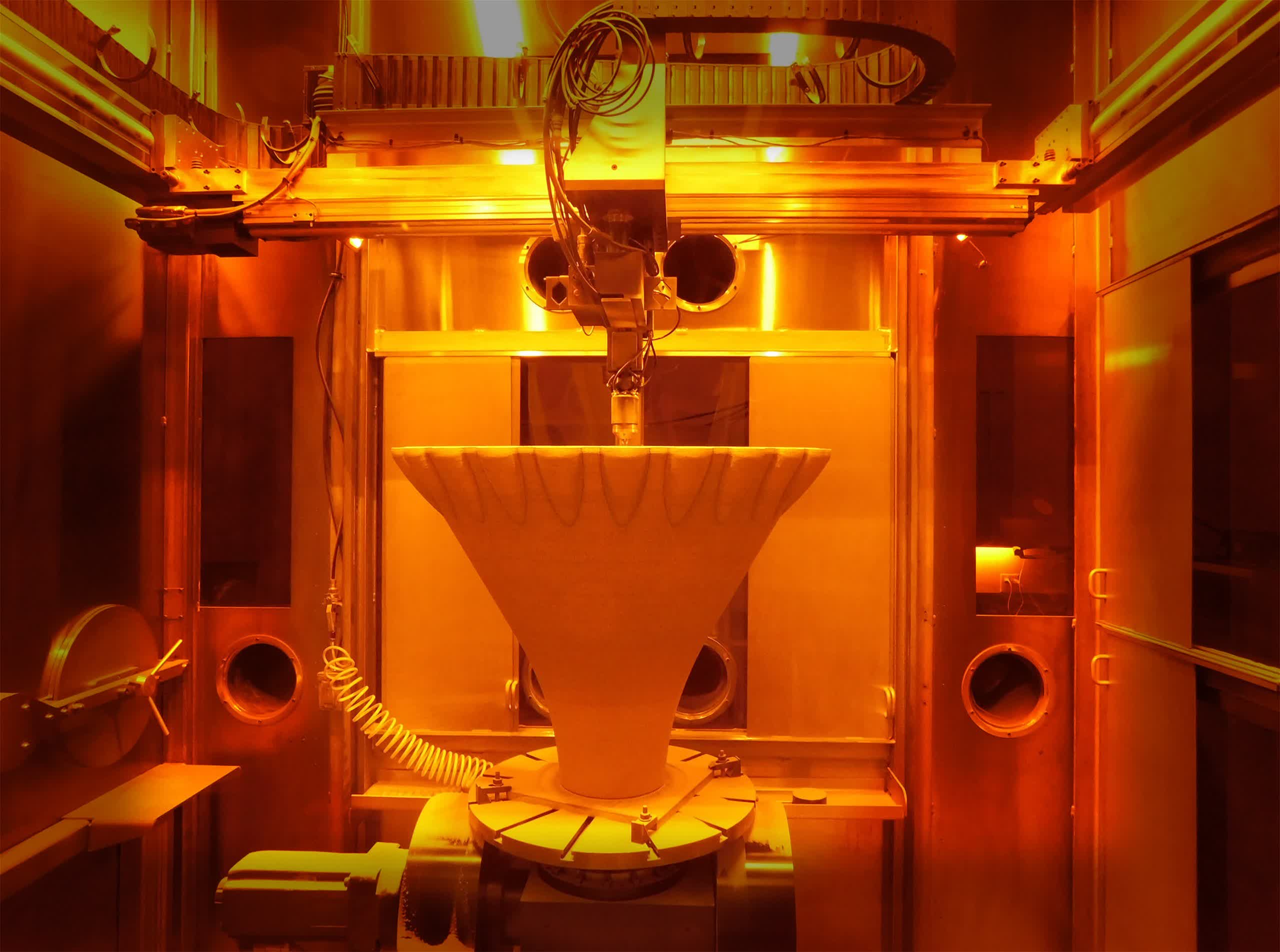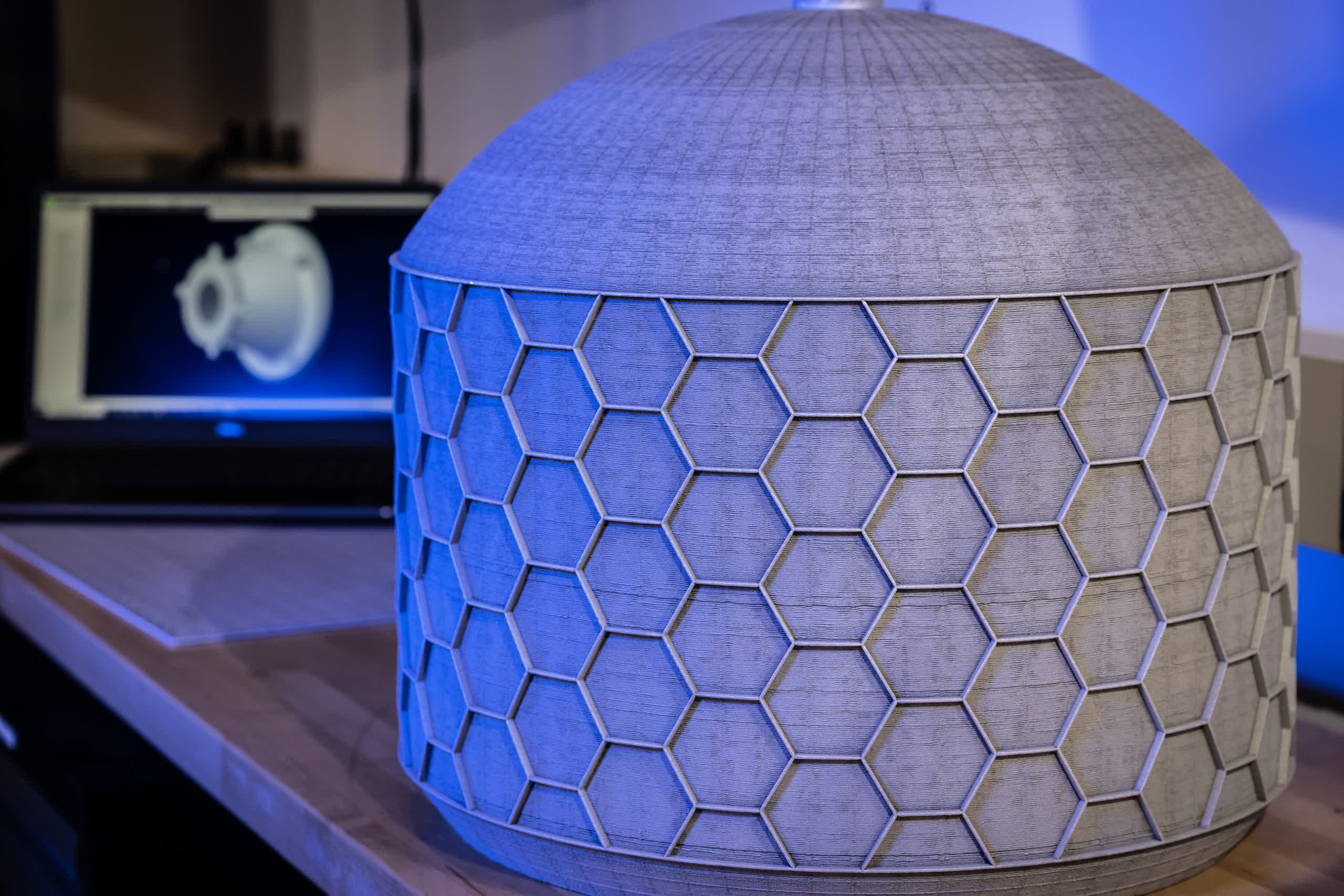Why it matters: To improve the chances of success in its ambitious upcoming missions, NASA strives to increase efficiency and decrease mass wherever possible. Rocket nozzles are one area where the agency recently experienced a significant breakthrough using 3D printing and a new type of aluminum.
NASA recently unveiled rocket nozzles manufactured with a new process that passed testing a few months ago, making them lighter and easier to construct. The innovation could help the agency reach future goals on the moon and Mars.
Cooperating with Elementum 3D, NASA made the RAMFIRE (Reactive Additive Manufacturing for the Fourth Industrial Revolution) nozzles from a new kind of aluminum they developed called A6061-RAM2. Aluminum is strong and relatively lightweight, potentially reducing the mass a mission must launch out of Earth's atmosphere and through space, thus saving fuel.
However, aluminum is typically not very heat-resistant, making it difficult to weld into a nozzle. Another problem is getting the material to withstand the rocket exhaust, which can exceed 6,000 degrees Fahrenheit.

Manufacturer RPM Innovations built the RAMFIRE out of A6061-RAM2 using a process called laser powder-directed energy deposition (LP-DED) with powder that NASA and Elementum 3D modified. The technique has been proven to increase structural cooling rates, and the RAMFIRE design incorporates small internal channels for additional cooling.
The result is lighter and can be manufactured far more quickly and with significantly fewer moving parts. Building traditional nozzles can require up to 1,000 individual pieces, but the RAMFIRE is formed as a single part.
Multiple tests earlier this year demonstrated that RAMFIRE can withstand the most intense deep-space environments. The nozzles successfully started 22 times in under 10 minutes at greater-than-anticipated pressure using liquid oxygen-hydrogen and liquid oxygen-methane fuel.

Other space shuttle components could also benefit from the RAMFIRE process. Demonstrations have suggested its viability for cryogenic fluid nozzles, and companies are evaluating its potential use for advanced satellites.
NASA's ongoing Artemis program seeks to return to the moon in multiple stages over the next several years. The agency completed a successful flyby of the moon late last year and plans to send a crew into orbit around Earth's natural satellite in May 2024.
A NASA satellite orbiting the moon will support the final phase, which seeks to bring the first humans to the surface since the 1970s Apollo missions. New components like RAMFIRE nozzles could increase Artemis' chances of success.